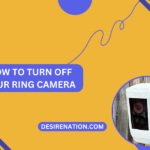Red light cameras have become a common feature in many urban areas, serving as traffic enforcement tools to enhance road safety. If you’ve ever wondered what red light cameras look like and how to identify them, this guide will provide insights into their appearance and where you can typically find them.
1. Camera Housing:
-
Distinctive Enclosures:
- Red light cameras are often housed in sturdy and weather-resistant enclosures. These housings are typically rectangular or box-shaped and may vary in size based on the specific camera model.
-
Color:
- The enclosures are often painted in a noticeable color, such as yellow or gray, to make them easily visible to motorists.
2. Camera Lenses:
-
Multiple Lenses:
- Red light cameras are equipped with multiple lenses to capture various angles of the intersection. These lenses may include a main camera for capturing the license plate and secondary cameras for additional views.
-
Infrared Capability:
- Some red light cameras have infrared lenses to capture clear images even in low-light conditions, such as at night.
3. Flash Units:
-
Illumination for Nighttime:
- To ensure clear images during nighttime violations, red light cameras are equipped with flash units. These flashes illuminate the scene at the moment of the violation, allowing for accurate identification.
-
Location:
- The flash units are usually positioned close to the camera lenses within the housing.
4. Sensor Technology:
-
Inductive Loop Sensors:
- Red light cameras are often connected to inductive loop sensors embedded in the road at the intersection. These sensors detect the presence of vehicles waiting at the red light and trigger the camera when a violation occurs.
-
Advanced Detection:
- Some modern red light cameras use advanced sensor technologies, such as radar or video analytics, to detect potential violations more accurately.
5. Mounting Locations:
-
Overhead Mounting:
- Red light cameras are commonly mounted on overhead structures, such as traffic signal poles or specialized camera poles. The overhead position provides a clear line of sight to the intersection.
-
Side Mounting:
- In some cases, red light cameras may be side-mounted on poles or structures, especially in locations where overhead mounting is not feasible.
6. Signage:
-
Warning Signs:
- To alert drivers to the presence of red light cameras, warning signs are often placed in advance of the camera-equipped intersection. These signs serve as a visual cue for motorists to adhere to traffic signals.
-
Regulatory Signs:
- Regulatory signs may also be posted, indicating the use of red light cameras and warning of potential penalties for violations.
7. Intersection Markings:
-
Painted Lines:
- Some jurisdictions mark the road at intersections with specific lines or symbols to indicate the presence of red light cameras. These markings serve as an additional visual cue for drivers.
8. Online Maps and Apps:
-
Community Reporting:
- Some online mapping services and traffic apps allow users to report the locations of red light cameras. Utilizing these features can help drivers be aware of camera-equipped intersections in their area.
Conclusion:
Understanding what red light cameras look like is essential for drivers to remain vigilant at intersections and adhere to traffic signals. The distinct appearance of these cameras, coupled with warning signs and markings, serves as a deterrent to potential violators. Being aware of the presence of red light cameras contributes to safer roadways and encourages responsible driving behavior.
You Might Also Like These:
Baldur’s gate 3 change camera angle
Do blink cameras work without wifi












